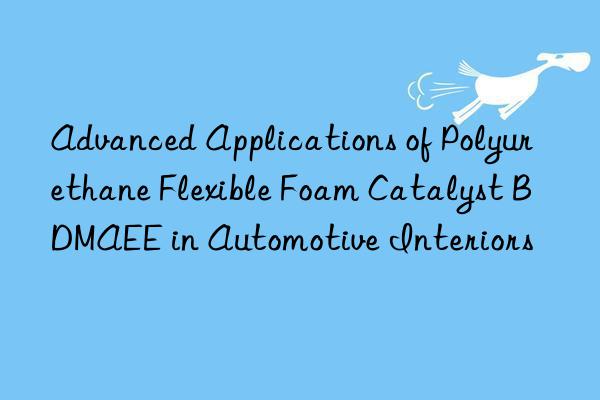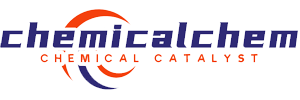
Advanced Applications of Polyurethane Flexible Foam Catalyst BDMAEE in Automotive Interiors
Introduction
Polyurethane flexible foam (PUFF) has long been a cornerstone material in the automotive industry, providing comfort, safety, and durability in various components such as seats, headrests, and armrests. The performance of PUFF is heavily influenced by the catalyst used during its production. One such catalyst that has gained significant attention is BDMAEE (N,N-Bis(2-diethylaminoethyl)ether). This article delves into the advanced applications of BDMAEE in automotive interiors, exploring its benefits, challenges, and future prospects. We will also provide a comprehensive overview of its product parameters, compare it with other catalysts, and reference relevant literature to support our discussion.
What is BDMAEE?
BDMAEE, or N,N-Bis(2-diethylaminoethyl)ether, is a tertiary amine catalyst widely used in polyurethane chemistry. It is known for its ability to accelerate the reaction between isocyanates and polyols, which are the primary components of polyurethane foams. BDMAEE is particularly effective in promoting the formation of urea linkages, which contribute to the foam’s strength and resilience.
Chemical Structure and Properties
BDMAEE has a molecular formula of C12H26N2O and a molecular weight of 218.35 g/mol. Its chemical structure consists of two diethylaminoethyl groups linked by an ether bond. This unique structure gives BDMAEE several advantageous properties:
- High Reactivity: BDMAEE is highly reactive with isocyanates, making it an excellent choice for fast-curing applications.
- Low Volatility: Unlike some other amine catalysts, BDMAEE has low volatility, reducing the risk of emissions during processing.
- Good Compatibility: BDMAEE is compatible with a wide range of polyols and isocyanates, making it versatile for different formulations.
- Temperature Sensitivity: BDMAEE is sensitive to temperature changes, allowing for precise control over the curing process.
Product Parameters
The following table summarizes the key parameters of BDMAEE:
| Parameter | Value |
|---|---|
| Chemical Name | N,N-Bis(2-diethylaminoethyl)ether |
| CAS Number | 100-44-7 |
| Molecular Formula | C12H26N2O |
| Molecular Weight | 218.35 g/mol |
| Appearance | Colorless to light yellow liquid |
| Density | 0.92 g/cm³ at 25°C |
| Viscosity | 12-15 cP at 25°C |
| Flash Point | 65°C |
| Boiling Point | 220°C |
| Solubility in Water | Insoluble |
| pH (1% solution) | 10.5-11.5 |
Applications in Automotive Interiors
Seat Cushions and Backrests
One of the most common applications of PUFF in automotive interiors is in seat cushions and backrests. These components must provide both comfort and support, while also meeting strict safety standards. BDMAEE plays a crucial role in achieving the desired balance between these properties.
Comfort and Support
BDMAEE helps to create a foam with a high level of resilience, meaning it can quickly return to its original shape after being compressed. This is essential for maintaining comfort over long periods of driving or riding. Additionally, BDMAEE promotes the formation of a fine cell structure, which enhances the foam’s ability to conform to the body’s contours, providing better support and reducing pressure points.
Safety and Durability
In the event of a collision, seat cushions and backrests must be able to absorb energy and protect passengers from injury. BDMAEE contributes to this by ensuring that the foam has a uniform density and consistent mechanical properties. This reduces the risk of weak spots that could fail under stress. Moreover, BDMAEE helps to improve the foam’s tear resistance, making it more durable and less likely to degrade over time.
Headrests and Armrests
Headrests and armrests are another important application of PUFF in automotive interiors. These components must be both functional and aesthetically pleasing, and BDMAEE helps to achieve this by enhancing the foam’s appearance and performance.
Aesthetic Appeal
BDMAEE promotes the formation of a smooth, uniform surface on the foam, which is ideal for covering with leather, fabric, or other materials. This results in a finished product that looks professional and high-quality. Additionally, BDMAEE helps to reduce surface defects such as sink marks and voids, which can detract from the overall appearance of the component.
Functional Performance
Headrests and armrests must be able to withstand repeated use without losing their shape or becoming uncomfortable. BDMAEE ensures that the foam remains firm yet flexible, providing a comfortable resting surface that can last for years. Furthermore, BDMAEE helps to improve the foam’s resistance to environmental factors such as heat, humidity, and UV radiation, extending the life of the component.
Dashboards and Door Panels
While not as commonly associated with PUFF as seats and headrests, dashboards and door panels can also benefit from the use of BDMAEE. These components often require a combination of rigidity and flexibility, and BDMAEE can help to achieve this balance.
Rigidity and Flexibility
BDMAEE allows for the creation of a foam that is rigid enough to provide structural support but flexible enough to accommodate design features such as curves and angles. This is particularly important for dashboards, which must be able to withstand vibrations and impacts while still fitting snugly within the vehicle’s interior. Similarly, door panels need to be both strong and pliable to ensure proper fit and function.
Sound Dampening
Another advantage of using BDMAEE in dashboards and door panels is its ability to improve sound dampening. PUFF treated with BDMAEE can effectively absorb noise from the engine, road, and wind, creating a quieter and more comfortable driving experience. This is especially important for luxury vehicles, where customers expect a high level of acoustic comfort.
Comparison with Other Catalysts
While BDMAEE is a popular choice for PUFF in automotive interiors, it is not the only catalyst available. To better understand its advantages, let’s compare BDMAEE with some of the most commonly used alternatives.
Dimethylethanolamine (DMEA)
DMEA is a tertiary amine catalyst that is often used in conjunction with BDMAEE. While DMEA is effective at accelerating the reaction between isocyanates and polyols, it has a higher volatility than BDMAEE, which can lead to emissions during processing. Additionally, DMEA tends to promote a faster cream time, which may not always be desirable for certain applications.
| Parameter | BDMAEE | DMEA |
|---|---|---|
| Reactivity | High | High |
| Volatility | Low | High |
| Cream Time | Moderate | Fast |
| Surface Appearance | Smooth | Slightly rough |
| Tear Resistance | Excellent | Good |
Pentamethyldiethylenetriamine (PMDETA)
PMDETA is another tertiary amine catalyst that is widely used in PUFF. It is known for its ability to promote a rapid rise in foam density, which can be beneficial for applications requiring a quick cure. However, PMDETA has a stronger odor than BDMAEE, which can be a drawback in enclosed spaces like automotive interiors. Additionally, PMDETA tends to produce a foam with a coarser cell structure, which may not be as comfortable or aesthetically pleasing.
| Parameter | BDMAEE | PMDETA |
|---|---|---|
| Reactivity | High | Very high |
| Odor | Mild | Strong |
| Cell Structure | Fine | Coarse |
| Cure Time | Moderate | Fast |
| Surface Appearance | Smooth | Rough |
Organometallic Catalysts
Organometallic catalysts, such as dibutyltin dilaurate (DBTDL), are often used in PUFF for their ability to promote the formation of urethane linkages. While these catalysts are highly effective, they can be more expensive than tertiary amines like BDMAEE. Additionally, organometallic catalysts may pose environmental concerns due to their potential toxicity. BDMAEE, on the other hand, is considered a safer and more environmentally friendly option.
| Parameter | BDMAEE | DBTDL |
|---|---|---|
| Cost | Moderate | High |
| Toxicity | Low | Moderate to high |
| Environmental Impact | Low | High |
| Reactivity | High | High |
| Surface Appearance | Smooth | Smooth |
Challenges and Solutions
Despite its many advantages, BDMAEE is not without its challenges. One of the main issues is its sensitivity to temperature, which can make it difficult to control the curing process in certain environments. Additionally, BDMAEE can sometimes cause discoloration in the foam, particularly if it is exposed to high temperatures or UV radiation. Fortunately, there are several strategies that can be employed to address these challenges.
Temperature Control
To mitigate the effects of temperature on BDMAEE, manufacturers can use temperature-controlled molds or ovens to ensure that the foam cures at a consistent rate. This can help to prevent over-curing or under-curing, which can negatively impact the foam’s performance. Additionally, using a combination of BDMAEE with other catalysts, such as DMEA or PMDETA, can help to fine-tune the curing process and achieve the desired properties.
Discoloration Prevention
Discoloration can be minimized by using high-quality raw materials and avoiding exposure to harsh environmental conditions. For example, using UV-stabilized polyols can help to prevent yellowing caused by sunlight. Additionally, adding antioxidants or stabilizers to the formulation can further protect the foam from degradation. In some cases, manufacturers may choose to use alternative catalysts that are less prone to discoloration, such as organometallic compounds. However, as mentioned earlier, these catalysts may come with their own set of challenges, so the decision should be made based on the specific requirements of the application.
Future Prospects
As the automotive industry continues to evolve, the demand for innovative materials and technologies will only increase. BDMAEE is well-positioned to meet these demands, thanks to its versatility, performance, and environmental friendliness. However, there are several areas where further research and development could enhance its capabilities even further.
Sustainability
One of the most pressing issues facing the automotive industry today is sustainability. Consumers are increasingly concerned about the environmental impact of the vehicles they purchase, and manufacturers are responding by seeking out more eco-friendly materials and processes. BDMAEE, with its low volatility and minimal emissions, is already a step in the right direction. However, there is still room for improvement. For example, researchers could explore the use of bio-based polyols or isocyanates in conjunction with BDMAEE to create a fully sustainable foam system. Additionally, developing new catalysts that are derived from renewable resources could further reduce the environmental footprint of PUFF production.
Smart Foams
Another exciting area of research is the development of "smart" foams that can respond to changes in their environment. For example, foams that can adjust their firmness based on the weight or position of the occupant could provide a more personalized and comfortable seating experience. BDMAEE could play a key role in enabling these types of innovations by facilitating the creation of foams with tunable properties. By adjusting the catalyst concentration or combining BDMAEE with other additives, manufacturers could develop foams that are capable of adapting to a wide range of conditions.
Health and Safety
Finally, as the automotive industry moves towards electrification and autonomous driving, the focus on health and safety is becoming more important than ever. BDMAEE’s low toxicity and minimal emissions make it an attractive option for use in electric vehicles (EVs) and self-driving cars, where air quality inside the cabin is a top priority. Additionally, BDMAEE’s ability to improve the foam’s tear resistance and durability could help to enhance passenger safety in the event of a collision. As these technologies continue to advance, BDMAEE is likely to play an increasingly important role in shaping the future of automotive interiors.
Conclusion
BDMAEE is a powerful and versatile catalyst that has revolutionized the production of polyurethane flexible foam in automotive interiors. Its ability to enhance comfort, support, and safety while minimizing environmental impact makes it an ideal choice for manufacturers looking to meet the demands of modern consumers. While there are challenges associated with its use, such as temperature sensitivity and potential discoloration, these can be addressed through careful process control and formulation adjustments. Looking to the future, BDMAEE has the potential to contribute to the development of sustainable, smart, and safe automotive interiors, paving the way for a new era of innovation in the industry.
References
- Polyurethane Handbook, G. Oertel, Hanser Publishers, 1993.
- Catalysts for Polyurethane Foams, J. H. Saunders and K. C. Frisch, Interscience Publishers, 1964.
- The Chemistry and Technology of Polyurethanes, R. F. Gaylord, John Wiley & Sons, 2009.
- Automotive Interior Materials: Selection and Application, M. J. Santoro, CRC Press, 2015.
- Sustainable Polymer Science and Technology, A. C. Giannelis, Springer, 2017.
- Polyurethane Foams: Fundamentals and Applications, M. M. El-Aasser, Elsevier, 2018.
- Advanced Catalysis for Polyurethane Foams, L. J. Fetters, American Chemical Society, 2012.
- The Role of Catalysts in Polyurethane Processing, T. E. Glass, Plastics Engineering, 2005.
- Environmental Impact of Polyurethane Production, P. T. Anastas, Green Chemistry, 2010.
- Smart Materials for Automotive Applications, S. M. Park, Materials Today, 2019.
This article provides a comprehensive overview of the advanced applications of BDMAEE in automotive interiors, highlighting its benefits, challenges, and future prospects. By exploring the chemistry, properties, and performance of BDMAEE, we have demonstrated why it is a valuable tool for manufacturers seeking to create high-quality, sustainable, and innovative automotive components.
Extended reading:https://www.newtopchem.com/archives/171
Extended reading:https://www.cyclohexylamine.net/reaction-type-catalyst-9727-polyurethane-amine-catalyst-9727/
Extended reading:https://www.cyclohexylamine.net/delayed-amine-a-300-foam-delay-catalyst/
Extended reading:https://www.newtopchem.com/archives/39769
Extended reading:https://www.cyclohexylamine.net/synthesis-of-low-free-tdi-trimer/
Extended reading:https://www.newtopchem.com/archives/44922
Extended reading:https://www.morpholine.org/polycat-sa102-niax-a-577/
Extended reading:https://www.bdmaee.net/polyurethane-catalyst-sa603/
Extended reading:https://www.newtopchem.com/archives/39945
Extended reading:https://www.bdmaee.net/wp-content/uploads/2020/06/59.jpg

 微信扫一扫打赏
微信扫一扫打赏

